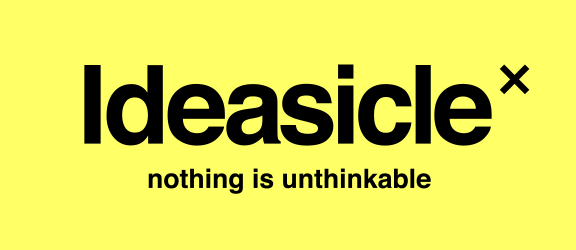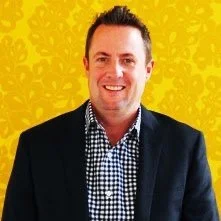The Cost Of NOT Having A Great Idea
Clients can be quick to question the cost of agencies coming up with ideas. What’s the blended rate you’re billing me? Why do you need three teams working on this? Explain to me the overhead you charge every month. Can’t blame them, really. It is important to keep all marketing costs in check. But what about the cost of NOT having a great idea? Why don’t clients ever ask that question? Well, I asked a few of my Ideasicle Experts to identify ideas they’ve been a part of, the absence of which would have blunted the trajectory of a client’s business.
Idea: The Sam Adams Time Capsule
Michael Ancevic
When the news broke that they found a time capsule in the Boston State House left by Sam Adams and Paul Revere and it was going to be x-rayed by the Museum Of Contemporary Art the following week, our agency, The Fantastical immediately called our client at Sam Adams with a simple but big idea. Within a few hours we had photoshopped an x-ray of a box containing some coins, a small tin toy horse and a 6 pack of Sam Adams and we put it on all of Sam Adams social channels.
By the end of the day it was picked up by all of the Boston area publications and two days after that it was on the Today Show. The Today Show talked about the news of the time capsule’s discovery and they showed our x ray visual with a quote that Sam Adams brand has an idea of what might be in it. It was a great example of marketing in the moment and some amazing national free publicity. And the power of a sharable idea that can overcome not having a big budget.
While not having this idea wouldn’t have cost Sam Adams any money per se, it shows how the amazing power of being scrappy, having a big idea and marketing in the moment can be invaluable.
Michael’s agency The Fantastical.
The Idea: Carl’s Jr. Juicy and Drippy Burgers
Claudia Caplan
When you talk about NOT having an idea, the thing that comes to mind for me is Carl's Jr. A simple idea completely changed the fortunes of a company. Carl's Jr. was a middling fast-food place -- probably about the same as Jack in the Box -- when we came up with the very simple premise that people liked their burgers juicy and drippy. "If it doesn't get all over the place, it doesn't belong in your face." Nothing changed about the products or the place but almost overnight, sales went through the roof. Simply showing people chowing down on big drippy burgers differentiated the offering. Otherwise, Carl's would have continued to wallow in the not great/maybe it's convenient world of multiple fast food outlets. It was a different way to think about the values of fast food that were dominated by McDonald's Big Mac and fries.
Alan Pafenbach
The Idea: Volkswagen, Make Standard Features Exceptional
When Volkswagen was launching a refresh of the Passat, the car looked pretty much the same. What was different was a laundry list of little improvements mostly under the hood and inside the car. Not ideal when the axiom for brand advertising is seldom, "Screw excitement! Let's talk cupholders!"
What struck us was the sheer number of new standard features. The list went into the hundreds. We picked 120 as a good memorable number. 120 became the product.
Commissioning a dozen or so video artists, we created a 10 second film for each feature. All metaphorical, weird, and hilarious. (Tik Tok where were you?) We built a website that featured a grid of poster frames numbered 1-120 and let you snack on as many as you wanted in one sitting. Engagement was through the roof. A gatefold print ad took the same tack.
Combined with quirky TV spots, (A guy having to talk his home stereo off the roof because it was jealous of the standard sound system in his Passat), the 120 standard features campaign generated outsized interest in what otherwise could have been a pretty boring sales sheet.
Valencia Gayles
The Idea: Seattle Rising
On a freelance assignment in 2021 to convince recent HBCU education graduates to move to Seattle and work for Seattle Public schools, a key insight was understanding that in the wake of the George Floyd murder, Black teachers were seen as premium candidates AND they wanted to work in majority minority communities where they felt they were needed the most and could make the most impact. Accordingly, considering the minority population of Seattle, the city most likely wouldn't make these graduates' top 5 list. In addition, we reminded Seattle Public Schools that their efforts were only beginning with recruiting these graduates. In order to be successful, they needed to think about how best to help these new teachers integrate into their new hometown, school and community, and illustrate the impact they could make in Seattle, as well as the professional growth opportunities available to them. We conducted research and several rounds of testing work, eventually leaning into a campaign—”Seattle Rising”—demonstrating the impact these new teachers could make in Seattle. The school district wanted to recruit these teachers to help close the education gap, particularly amongst Black male students. If this advertising initiative had failed, this education initiative would have suffered as well. Instead, Seattle Public Schools beat their Teachers of Color target by 7 percentage points (goal was 29%; actual was 36%).
The value of an idea is determined, like all things, by calculating the cost of generating the idea and weighing that against the return on the investment once the idea is produced and in the marketplace. Do you think VW, Carl’s Jr., Sam Adams, or Seattle Public Schools even remember how much those ideas cost? I think not.
Great ideas have such upside, the downside becomes the size of a rounding error.
If you are consistently upside down in the “idea value equation” you may want to find a new source of ideas. We know some people.
Will Burns is the Founder & CEO of the revolutionary virtual-idea-generating company, Ideasicle X. He’s an advertising veteran from such agencies as Wieden & Kennedy, Goodby Silverstein, Arnold Worldwide, and Mullen. He was a Forbes Contributor for nine years writing about creativity in modern branding. Sign up for the Ideasicle Newsletter and never miss a post.







